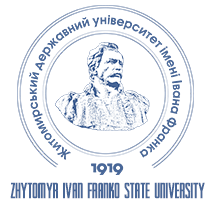EXPLORING THE POTENTIAL OF CHATGPT FOR TRAINING FUTURE FOREIGN LANGUAGE TEACHERS
DOI:
https://doi.org/10.35433/pedagogy.2(121).2025.16Keywords:
Artificial Intelligence (AI) technology, ChatGPT, future foreign language teachers, professional training, primary schoolAbstract
The article is aimed at analyzing the use of ChatGPT in foreign language teacher education and its potential for advancing educational development at the university level. This article explores the transformative potential of Artificial Intelligence (in particular, ChatGPT) in foreign language teacher education by analyzing its impact on student learning outcomes. Through a comprehensive literature review, the article synthesizes current findings on the integration of ChatGPT in educational settings, examining both the benefits and challenges it presents. The study explores into ChatGPT’s role in personalizing studying experiences, enhancing student engagement, and improving academic performance. The authors demonstrate the potential of ChatGPT in teaching disciplines related to studying foreign languages and the methodology of teaching foreign languages. The article emphasizes the importance of formulating clear and precise prompts as well as providing feedback for ChatGPT. The authors also suggest tasks with the use of ChatGPT that are appropriate for the professional training of future foreign language teachers (in particular, teachers of English in primary school). The article provides the examples of using the tasks mentioned above in the process of training students of specialty 013 "Primary education" (the educational and professional programs "Primary Education" and "Primary Education and English Language"). The authors illustrate ChatGPT prompts and its responses during practical classes of the courses "English for Professional Purposes", "Innovative Technologies of Teaching English" and "Methodology of Teaching English in Primary School". This research also suggests avenues for future inquiry, contributing to a deeper understanding of how ChatGPT can be effectively and responsibly integrated into foreign language teacher education, in particular, into training future teachers of English in primary school, to optimize students’ success.
References
Yim, I.H.Y., & Su, J. (2024). Artificial intelligence (AI) learning tools in K-12 education: A scoping review. Journal of Computers in Education, 1-39. DOI: 10.1007/s40692-023-00304-9 [in English].
Raja, S., Jebadurai, D.J., Ivan, L., Mykola, R.V., Ruslan, K., & Nadiia, P.R. (2024). Impact of Artificial Intelligence in Students’ Learning Life. In AI in Business: Opportunities and Limitations, vol. 2, 3-17. Cham: Springer Nature Switzerland. DOI: 10.1007/978-3-031-49544-1_1 [in English].
Naidu, A. (2019). Review: Impact of artificial intelligence on society. Retrieved from: https://csp.iisc.ac.in/wp/wp-content/uploads/2019/10/01A092019-Review-Impactof-Artificial-Intelligence-on-Society.pdf [in English].
Gayed, J.M., Carlon, M.K.J., Oriola, A.M., & Cross, J.S. (2022). Exploring an AIbased writing assistant’s impact on English language learners. Comp. Educ. Artif. Intell. 3:100055. DOI: 10.1016/j.caeai.2022.100055 [in English].
Smutny, P., & Schreiberova, P. (2020). Chatbots for learning: a review of educational chatbots for the Facebook messenger. Comput. Educ. 151:103862. DOI: 10.1016/j.compedu.2020.103862 [in English].
Klimova, B., & Pikhart, M. (2022). Application of corrective feedback using emerging technologies among L2 university students. Cog. Educ., 9, 1-14. DOI: 10.1080/2331186X.2022.2132681 [in English].
Reiss, M.J. (2021). The use of AI in education: practicalities and ethical considerations. Lond. Rev. Educ., 19, 1-14. DOI: 10.14324/LRE.19.1.05 [in English].
Klimova, B., Pikhart, M., & Kacetl, J. (2023). Ethical issues of the use of AIdriven mobile apps for education. Front. Public Health 10:1118116. DOI: 10.3389/fpubh.2022.1118116 [in English].
Baidoo-Anu, D., & Owusu Ansah, L. (2023). Education in the era of generative Artificial Intelligence (AI): understanding the potential benefits of ChatGPT in promoting teaching and learning. J. Artif. Intell, 7, 52-62. DOI: 10.61969/jai.1337500 [in English].
Rospigliosi, P.A. (2023). Artificial intelligence in teaching and learning: what questions should we ask of ChatGPT? Interact. Learn. Environ., 31, 1-3. DOI: 10.1080/10494820.2023.2180191 [in English].
Kelly, S.M. (2023). ChatGPT passes exams from law and business schools. CNN business. Retrieved from: https://edition.cnn.com/2023/01/26/tech/chatgpt-passes-exams/index.html [in English].
Kooli, C. (2023). Chatbots in education and research: a critical examination of ethical implications and solutions. Sustainability 15. DOI: 10.3390/su15075614 [in English].
Zhyhadlo, O., & Zaiarna, I. (2025). Shtuchnyi intelekt u testuvanni z anhliiskoi yak inozemnoi ta dlia spetsialnykh tsilei [Artificial intelligence-driven testing in efl/esp classrooms]. Informatsiini tekhnolohii i zasoby navchannia – Information Technologies and Learning Tools, 106(2), 122-133. DOI: 10.33407/itlt.v106i2.5957 [in Ukrainian].
Bakher, S., Binytska, K., Kraler, K., & Shcherbiak, Yu. (2025). Dydaktyka v umovakh vprovadzhennia shtuchnoho intelektu v osviti [Didactics in the context of the introduction of artificial intelligence in education]. Informatsiini tekhnolohii i zasoby navchannia – Information Technologies and Learning Tools, 106(2), 164-177. DOI: 10.33407/itlt.v106i2.5768 [in Ukrainian].
What is an AI promt? Retrieved from: https://www.techtarget.com/searchenterpriseai/definition/AI-prompt [in English].
Downloads
Published
Issue
Section
License

This work is licensed under a Creative Commons Attribution-NonCommercial-NoDerivatives 4.0 International License.
Authors published in this journal agree to the following terms:
a) The authors reserve the right to author their work and grant the journal the right to first publish this work under the Creative Commons Attribution License, which allows others to freely distribute the published work with a mandatory link to the authors of the original work and the first publication of the work therein magazine.
b) Authors have the right to enter into separate additional agreements regarding the non-exclusive distribution of the work in the form in which it was published by this journal (for example, posting work in an electronic repository of the institution or publishing as part of a monograph), provided that the reference to the first publication of the work is maintained therein. magazine.
c) Journal policy permits and encourages the submission of manuscripts by the authors on the Internet (for example, in repositories of institutions or on personal websites), both prior to submitting this manuscript to the editorial board and as it contributes to the emergence of productive scientific discussion, and has a positive impact on the promptness and dynamics of citing a published work (see The Effect of Open Access).

 ISSN
ISSN 





